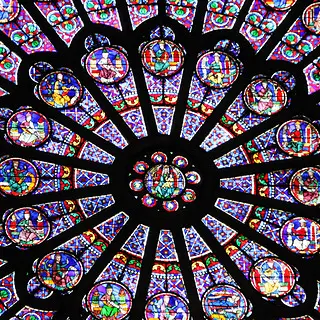
Why the Cathedral of Notre Dame Matters
Like people all over the world, I was brought to tears by the sight of flames shooting from the Cathedral of Notre Dame in Paris this week. As the spire collapsed, I feared that Notre Dame—a place treasured the world over—was gone forever. When Parisians spontaneously sang hymns on the streets Monday evening, I shared their sense of visceral shock and loss. And when images of the interior emerged the next day, I felt a deep sense of relief at the miraculous sight of intact blue and red stained glass, and votive candles still flickering in their red glass holders.
During and after this catastrophe, countless others confided on social media that they too felt such a profound sense of loss and, yes, even mourning over Notre Dame. The cathedral is one of the most iconic historic places in western civilization, but it is also more than that. As I wrote in my book Why Old Places Matter, and as the National Trust works to highlight for people every day, old places are a part of us. They form our identity and hold our memories. They define our collective sense of nationhood. Perhaps most profoundly, they foster an expansive sense of our own shared humanity.
Indeed, as I read peoples’ reactions Monday evening, I was moved by the many memories, as vivid and indelible as my own, being shared. Composer Eric Nathan told us how he was privileged to be up in the rafters of Notre Dame one evening, when it was closed to visitors, to hear a rehearsal of his work on the organ (that seems to have survived). “Old spaces seem to me to have a soul,” he wrote. “I felt we were meeting the private self of Notre Dame, when it sleeps, or perhaps stands guard. The stillness and silence were palpable. I remember thinking it was the same solitude it has nurtured for centuries, alone to itself in the late hours of the night.” Whatever time we visit, Notre Dame collects our memories of it. Each time we return, the place conjures the memories of prior visits, as old places do everywhere, and reconnects us to our younger selves.
“Old spaces seem to me to have a soul.”
Eric Nathan, Composer
Notre Dame is also a key monument to French national identity, and it has both survived and embodied all the changes in that identity since it was built in the 13th century. It stood when the government of France meant the divine right of kings, and when Louis XIV moved to Versailles.It survived the French Revolution, and the de-establishment and deconsecration of the church. It is where Napoleon Bonaparte crowned himself emperor of France. It watched as France was occupied by the German regime, and it watched as they were driven out. And it has stood over day-to-day shifts in politics right up to now, when so many present debates, in the face of the possible loss of this building, seem trivial. The possibility of losing Notre Dame—those flames shooting out of the roof—seemed to remind people that what they share as the people of France is greater than what divides them. That’s why people were singing hymns in the street.
Stay connected with us via email. Sign up today.
Of course, Notre Dame is also a part of our universal heritage. “I’ve never been to Paris,” my colleague Sarah Heffern wrote on Twitter, “I’ve never been in Notre Dame. And yet, I am so heartbroken I can hardly make a sentence.”
Most of us have felt this sense of loss when places that are part of our shared universal heritage are destroyed. When a treasured place disappears, whether it is a national cathedral, an old school, or a modest community church in Louisiana torched by an arsonist, people often feel a palpable sense of grief, a soul-destroying severing of people from place, identity, and memory.
We feel this loss because we recognize these places do something few other things can. They remind us that we are all part of humanity and the world. They expand our notion of ourselves beyond our treasured individual memories and national identity to give us an expansive sense of shared humanity around the globe. Notre Dame reminds us that we are collectively part of a continuum across the generations, past, present, and future, and across the world.
Sadly, people often aren’t aware of how much they care about the old places around them until they are threatened or lost. The fire at Notre Dame reminds us that these old places are part of who we are, and if we listen, as Eric listened in the rafters that evening, we may hear the humanity we share across time. These old places inspire us and connect us. I hope that, as France works to rebuild this beloved cathedral, we also reflect on other old places that matter to us and recommit to saving them.

photo by: Priya Chhaya
A gargoyle at the Cathedral of Notre Dame.
